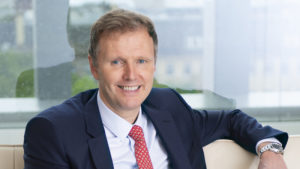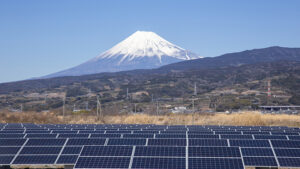Data from FE Analytics showed the Charlemagne Magna New Frontiers Fund returned a cumulative 130.89% for the five years to 16 January.
This was followed by Schroder’s ISF Frontier Markets Equity C Fund at 93.06%, the Schroder ISF Emerging Asia Z Fund at 90.06%, Fidelity’s Emerging Asia W Fund at 81.04%, and the Allianz Emerging Asia Equity A Fund at 75.74% for the same period.
Looking at the Charlemagne fund’s region weightings, the fund allocated 29.83% to the Middle East/Africa, 19.69% to Europe ex UK, 18.80% to the Americas, and 16.31% to the pacific basin. Its largest sector weighting went to financials at 32.3%, followed by consumer products at 18.8% and basic materials at 12%.

Frontier markets
Latest data from Portfolio Adviser‘s sister title Expert Investor’s research team, suggests that sentiment from European fund selectors was remarkably positive for the frontier market asset class, especially from Nordic countries.

According to investment manager Ashmore’s latest emerging market outlook, frontier markets remained a compelling strategic case and should continue to attract investors looking to diversify their global portfolios this year.
The firm found the frontier markets sector returned 31.8% in 2017 thanks to improvements in earnings growth and earnings expectations.
“However, significantly, the earnings recovery is only just starting in frontier markets. Moreover, frontier valuations are reasonably attractive trading in line with emerging and at a discount to developed markets,” the outlook said.
“The MSCI Frontier Markets index is trading around 12x price-to-earnings ratios.”
Speaking at a press briefing on Wednesday, Ashmore’s head of frontier markets, Andrew Brudenell said there were a lot of misperceptions about frontier markets.
“Frontier markets are just smaller emerging market countries that haven’t really pushed the button on accelerating reform and change which is good and bad news. The bad news is that they haven’t done it but the good news is that they have the capability to do it,” he said.
“They either decide to have more clarity in terms of regulation and legal structure and more stable political environment, perhaps a separation of army and politics, and judiciary versus politicians to create confidence domestically and eventually overseas to try and create an environment conducive to investment and growth.”
Brudenell said it was about relative change and that it was about looking at what path the countries were trying to get to as opposed to them looking like the US or Europe anytime soon.
He noted that the countries also had uncorrelated volatility that brought down the overall volatility of a diversified fund.
The firm’s outlook said structural changes were accelerating in several frontier economies which could drive higher growth as well as boost stock market returns and provide attractive investment opportunities.
It said the structural changes and correlating countries that were seeing the most change were:
- Institutional framework – Kenya, Pakistan, UAE, and Argentina
- Economic reform – Argentina, Saudi Arabia, Egypt, Pakistan, and Sri Lanka
- Enhanced security – Pakistan and Egypt
- Liberalising stock markets – Vietnam, Argentina, Kuwait, and Saudi Arabia
Emerging markets
Also speaking at the briefing, Ashmore global head of research, Jan Dehn said emerging market local currency markets in general were likely to see strong inflows in 2018.
He noted that emerging markets were a safe bet as populism engulfed developed markets, such as the US, and that the external debt asset class had doubled in size over the last 10 years.
“There are now 67 countries compared with 32 countries 10 years ago. When you put a lot of little countries into an index magic happens. Because they’re emerging markets, every time someone gets scared of Greece they dump these assets and they all have a lot of volatility,” Dehn said.
“But because Oman is a desert and Brazil is a rainforest, these countries are slightly different from each other. These differences give rise to negative covariant terms so even though they have the same variant when you stick them all together in a fund such as an index emerging market fund, surprise, volatility of the index declines.”
Dehn said his broad index expectations for emerging markets were 50% local currency, low 30% for external debt and about 25% return for corporate bonds in dollars terms.
“Nothing in developed markets beats this in fixed income, nothing. That’s why we are quietly positive on the asset class,” he said.
Regionally, he said there were three very distinct regional dynamics and recommended fixed income for Latin America, growth equities in Asia thanks to technology stocks, and to have a currency play for Eastern Europe.
The funds chosen for the top five emerging market funds were created from a list of funds that had the criteria of being an emerging market fund domiciled in either Luxembourg or Ireland.







